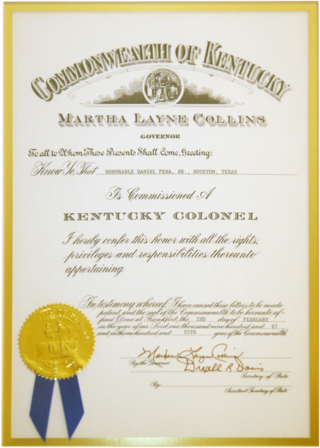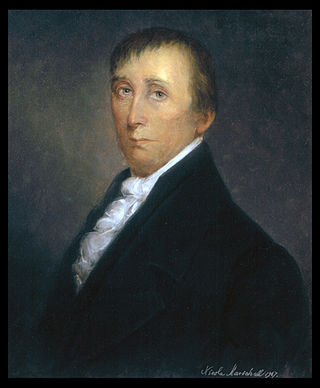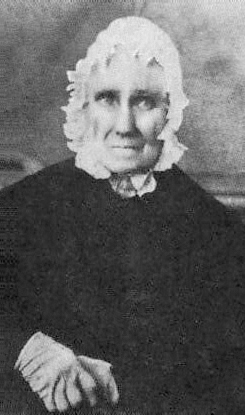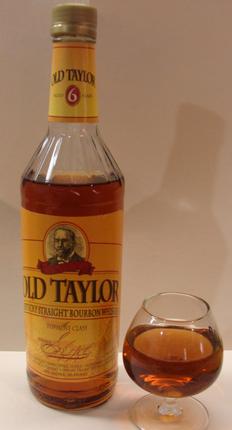Colonel is a senior military officer rank used in many countries. It is also used in some police forces and paramilitary organizations.

The Battle of Stones River, also known as the Second Battle of Murfreesboro, was a battle fought from December 31, 1862, to January 2, 1863, in Middle Tennessee, as the culmination of the Stones River Campaign in the Western Theater of the American Civil War. Of the major battles of the war, Stones River had the highest percentage of casualties on both sides. The battle ended in Union victory after the Confederate army's withdrawal on January 3, largely due to a series of tactical miscalculations by Confederate General Braxton Bragg, but the victory was costly for the Union army. Nevertheless, it was an important victory for the Union because it provided a much-needed boost in morale after the Union's recent defeat at Fredericksburg and also reinforced President Abraham Lincoln's foundation for issuing the Emancipation Proclamation, which ultimately discouraged European powers from intervening on the Confederacy's behalf.

The Battle of Perryville, also known as the Battle of Chaplin Hills, was fought on October 8, 1862, in the Chaplin Hills west of Perryville, Kentucky, as the culmination of the Confederate Heartland Offensive during the American Civil War. Confederate Gen. Braxton Bragg's Army of Mississippi initially won a tactical victory against primarily a single corps of Maj. Gen. Don Carlos Buell's Union Army of the Ohio. The battle is considered a strategic Union victory, sometimes called the Battle for Kentucky, since Bragg withdrew to Tennessee soon thereafter. The Union retained control of the critical border state of Kentucky for the remainder of the war.

Kentucky Colonel is the highest title of honor bestowed by the Commonwealth of Kentucky, and is the most well-known of a number of honorary colonelcies conferred by United States governors. A Kentucky Colonel Commission is awarded in the name of the Commonwealth by the Governor of Kentucky to individuals with "Honorable" titular style recognition preceding the names of civilians aged 18 or over, for noteworthy accomplishments, contributions to civil society, remarkable deeds, or outstanding service to the community, state, or a nation. The Governor bestows the honorable title with a colonelcy commission, by issuance of letters patent.

The Battle of Cloyd's Mountain was a Union victory in western Virginia on May 9, 1864, that allowed the Union forces to destroy a large bridge on the Virginia and Tennessee Railroad. The railroad was used to carry Confederate troops and supplies, and served important lead and salt mines. It also helped connect the Confederate capital of Richmond with Tennessee, and had telegraph wires along its line for communications. The fight had a high percentage of casualties for both sides, and the Confederate commander, Brigadier General Albert G. Jenkins, was mortally wounded.

The Battle of Middle Creek was an engagement fought January 10, 1862, in Eastern Kentucky during the American Civil War. It was the only battle personally commanded by future president James A. Garfield, then a colonel in the Union Army.

The Battle of Munfordville was an engagement in Munfordville, Kentucky during the American Civil War. Victory there allowed the Confederates to temporarily strengthen their hold on the region and impair Union supply lines.

Thomas Leonidas Crittenden was a lawyer, politician, and Union general during the American Civil War.

George Madison was the sixth Governor of Kentucky. He was the first governor of Kentucky to die in office, serving only a few weeks in 1816. Little is known of Madison's early life. He was a member of the influential Madison family of Virginia, and was a second cousin to President James Madison. He served with distinction in three wars – the Revolutionary War, Northwest Indian War, and War of 1812. He was twice wounded in the Northwest Indian War, and in the War of 1812 he was taken prisoner following the Battle of Frenchtown in Michigan.

The Wabash Valley is a region located in sections of both Illinois and Indiana. It is named for the Wabash River and, as the name is typically used, spans the middle to the middle-lower portion of the river's valley and is centered at Terre Haute, Indiana. The term Wabash Valley is frequently used in local media in Clinton, Lafayette, Mount Carmel, Princeton, Terre Haute, and Vincennes all of which are either on or near the Lower Wabash River.

The Big Sandy Expedition was an early campaign of the American Civil War in Kentucky that began in mid-September 1861 when Union Brig. Gen. William "Bull" Nelson received orders to organize a new brigade at Maysville, Kentucky and conduct an expedition into the Big Sandy Valley region of Eastern Kentucky and stop the build-up of Confederate forces under Col. John S. Williams. This was done in three phases. From September 21 to October 20, 1861, Nelson assembled a brigade of 5,500 Union volunteers from Ohio and Kentucky. On October 23, the southern prong secured Hazel Green and the northern prong West Liberty. The two prongs were consolidated at Salyersville and they began the final phase on October 31. This led to the Battle of Ivy Mountain on November 8 and the withdrawal of Confederate forces from Pikeville (Piketon) on November 9, 1861.
The Battle of Paducah was fought on March 25, 1864, during the American Civil War. A Confederate cavalry force led by Maj. Gen. Nathan Bedford Forrest moved into Tennessee and Kentucky to capture Union supplies. Tennessee had been occupied by Union troops since 1862. He launched a successful raid on Paducah, Kentucky, on the Ohio River.

Sarah Bush Lincoln was the second wife of Thomas Lincoln and stepmother of Abraham Lincoln. She was born in Kentucky to Christopher and Hannah Bush. She married her first husband, Daniel Johnston, in 1806, and they had three children. Daniel Johnston died in 1816, and in 1819, she married widower Thomas Lincoln, joining his family with her three children.

The Battle of Baton Rouge was a ground and naval battle in the American Civil War fought in East Baton Rouge Parish, Louisiana, on August 5, 1862. The Union victory halted Confederate attempts to recapture the capital city of Louisiana.
The Battle of Salyersville, also called Battle of Ivy Point Hill, also called The Battle of Half Mountain, was the largest of the many skirmishes in Magoffin County, Kentucky, during the American Civil War.

Edward Russell Hicks was an American film character actor. Hicks was born in 1895 in Baltimore, Maryland. During World War I, he served in the U.S. Army in France. He later became a lieutenant Colonel in the California State Guard.

The Colonel Robert A. Smith Monument, located in Hart County, Kentucky, is a monument related to the American Civil War, listed on the National Register of Historic Places. It was built in the memory of Colonel Robert A. Smith and the members of the 10th Mississippi Infantry Regiment who died in the service of the Confederate States of America on September 14, 1862, at the Battle of Munfordville.

ColonelHarland David Sanders was an American businessman, best known for founding fast food chicken restaurant chain Kentucky Fried Chicken and later acting as the company's brand ambassador and symbol. His name and image are still symbols of the company.

The 1910 Kentucky Derby was the 36th running of the Kentucky Derby. The race took place on May 10, 1910, held at Churchill Downs racecourse in Louisville, Kentucky and was the first year in which the race times were counted in fifths of a second instead of quarters of a second in hopes of having a more accurate race duration time of the horses. The winning horse's name is Donau who was jockeyed by Frederick Herbert. Donau was awarded $4,850, second place horse received $700, and third place horse received $300.

Old Taylor Bourbon is a brand of straight bourbon whiskey produced at Buffalo Trace Distillery in Franklin County, Kentucky by the Sazerac Company. It was named in honor of the historic distiller Col. Edmund Haynes Taylor, Jr.


















